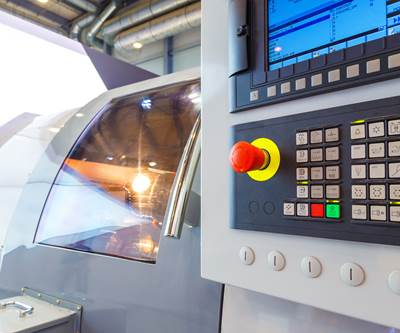3 Ways to Help New Engineers Understand Manufacturing
Priorities, processes and personnel are three things new engineers must understand about the shop floor.
Share





When considering the skills gap, we tend to think about people who work on the shopfloor tending machines and assembling products. But the skills gap extends to all areas of manufacturing, including design and manufacturing engineering.
Just as it has become nearly impossible to find and hire experienced people to program, set up and run CNC machines, it has also become challenging to find and hire experienced design and manufacturing engineers. Most newly hired engineers come straight from university with no practical manufacturing experience. While this has always been the case, retiring engineers and the resurgence of manufacturing have created an engineering shortage.
Just as companies invest time, effort and money in educating employees who work on the shop floor, so too should they invest in entry-level engineering staff.
Just as companies invest time, effort and money in educating employees who work on the shop floor, so too should they invest in entry-level engineering staff. These people affect all aspects of our CNC environments. Here, I offer three ways to help new engineers understand what happens on the shop floor.
Priorities: Understanding what management thinks is important
Companies vary in the ways they prioritize production versus components and products. This can be exemplified through department layout. Does the company put higher values on equipment utilization or throughput? If equipment utilization is the priority, departments are organized by processes performed — machining, fabrication, welding, finishing and assembly departments. If throughput is the priority, companies will develop manufacturing cells containing various machines needed to complete similar components.
With a firm understanding of the company’s priorities, a manufacturing engineer can develop efficient processes and a design engineer can create understandable engineering drawings. In the department layout example, a manufacturing engineer in a company that prioritizes machine utilization may need to develop multiple processes for a given component since the component may be run on multiple (different) machine tools. If throughput is prioritized, they will be better able to optimize a given process since the related machine tool(s) are fixed.
Processes: Understand how components and products are produced
There are countless manufacturing processes that can be used to produce components and products. Indeed, some companies even use multiple processes in the production of a given component based on factors like current quantity of parts to be produced, machine(s) to be used and available personnel.
It can be challenging for new engineers to become familiar with the various processes used in your company, but manufacturing engineers must understand these processes. They are, of course, the people responsible for directing shopfloor personnel in process implementation.
It is every bit as important that design engineers understand your company’s manufacturing processes. These are the people responsible for creating competitive products, so they must know the strengths and weaknesses of available manufacturing equipment. If machines have unknown capabilities, designers cannot take advantage of them. If machines have unknown limitations, designers will give unrealistic specifications. In either case, optimal manufacturing processes cannot be developed.
Consider what a design engineer must know about additive manufacturing (AM) in order to design components produced by AM. Their designs must consider the AM method being used, material composition, component orientation, need for support material and many other factors in order to be successful. Just as with AM, the more a design engineer knows about subtractive manufacturing processes being used to produce their designs, the better their designs can be.
Personnel: Understanding what shopfloor people are doing
Companies vary in the ways they use their shopfloor employees to tend production equipment. These companies have people team up on the various tasks related to setting up machines and keeping them running. Though teaming up requires more people, machine tools will be producing for a larger percentage of time.
Companies that emphasize personnel utilization tend to have one person performing multiple setup- and production-related tasks. While fewer people are required, they must be more skilled, and machine tools may often sit idle while waiting for someone to do something.
If machine utilization is emphasized, manufacturing engineers must design and define the individual tasks each person performs. If personnel utilization is emphasized, they must provide required help, simplifying tasks when possible, to make it as quick and easy as possible for shop people to complete their assigned responsibilities.
Design engineers must also be aware the skill level of the people interpreting their drawings. Design complexity can be higher if they know manufacturing engineers are providing process documentation for shop floor people. But if shop floor people will be directly referencing design engineering drawings, design engineers must take care to keep design methods clear, consistent and as simple to interpret as possible.
Related Content
2 Secondary Coordinate Systems You Should Know
Coordinate systems tell a CNC machine where to position the cutting tool during the program’s execution for any purpose that requires the cutting tool to move.
Read MoreStrange But True: Odd Things That Happen With CNCs
These oddities in the way a CNC naturally behaves can help explain some rather unusual situations that may occur during machining.
Read MoreA Higbee Thread Milling Custom Macro
Higbee threads provide a full thread form at the very start of the thread. The sharp edge is removed during the machining process.
Read MoreTroubleshooting Differences in Programming Methods, Machine Usage
Regardless of the level of consistency among machines owned by your company, you probably have experienced consistency-related issues. Here are some tips to help solve them.
Read MoreRead Next
Stay Positive Regarding Our Future Workforce
The future of machining relies on our success in attracting and retaining a skilled workforce.
Read More5 Things New CNC Machine Operators Must Know
These subjects are the building blocks of training newcomers on a specific CNC machine tool.
Read MoreSetting Up the Building Blocks for a Digital Factory
Woodward Inc. spent over a year developing an API to connect machines to its digital factory. Caron Engineering’s MiConnect has cut most of this process while also granting the shop greater access to machine information.
Read More
.jpg;width=70;height=70;mode=crop)


















.jpg;maxWidth=300;quality=90)










